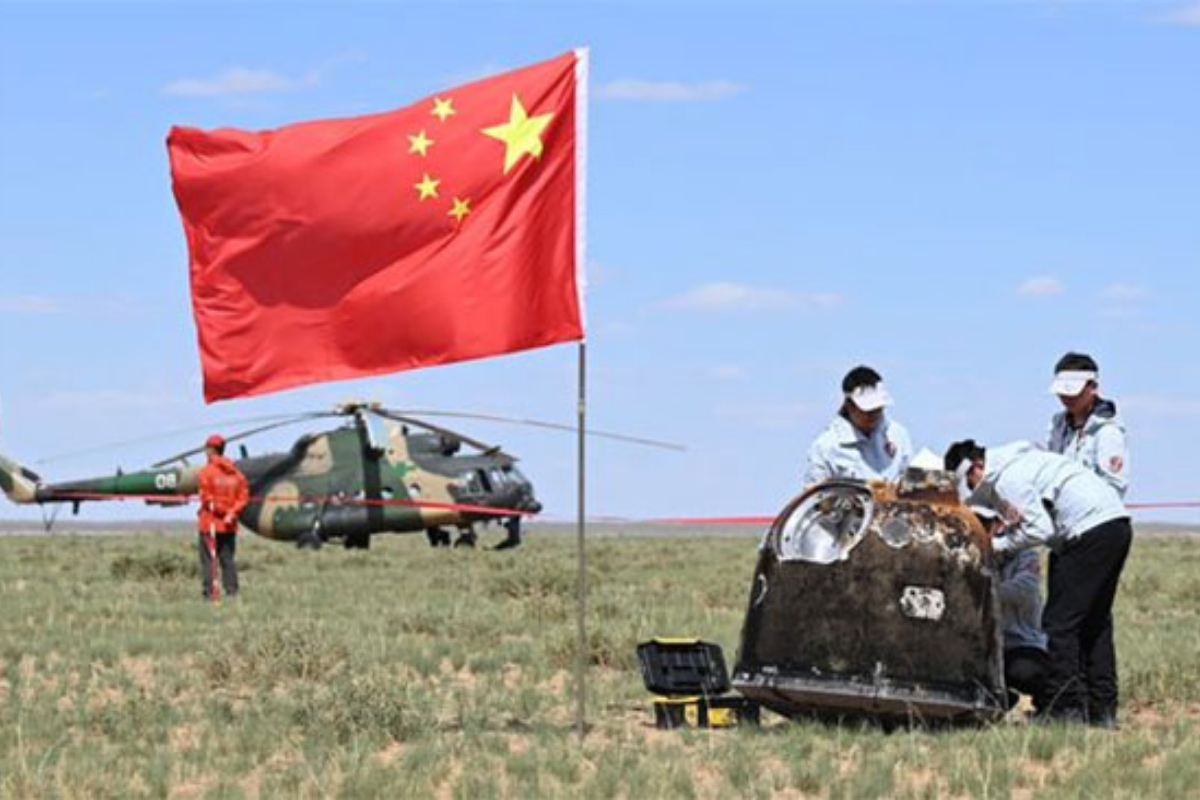China and EU set to discuss Electric Car Tariffs
China and the EU have agreed to negotiate a series of import...

China’s space probe returns with rare moon rocks
China’s lunar probe has returned to Earth with the first-ever samples from the Moon’s unexplored far side. The Chang’e-6 landed in the Inner Mongolia desert on Tuesday, after a nearly two-month-long mission that was fraught with risks.
Scientists are eagerly awaiting the Chang’e-6 as the samples could answer key questions about how planets are formed.
China achieved the distinction of being the only country to land on the far side of the Moon in 2019. The far side, which faces away from Earth, poses technical challenges for landing due to its distance and difficult terrain, characterized by giant craters and few flat surfaces.
Scientists have a keen interest in this less-explored side of the Moon because it is hoped to contain traces of ice, which can be harvested for water, oxygen, and hydrogen. The Chang’e-6 mission stands as a source of pride for a nation that has intensified its missions to the Moon, drawing attention from its rival, the US.
State media displayed officials planting the Chinese flag with a flourish immediately after the Chang’e-6 capsule landed in the desert of Inner Mongolia.
China’s President Xi Jinping called to congratulate those at the command center of the Chang’e-6 mission.
Mr Xi said he hopes they can carry on exploring deep space and “reaching new heights in unraveling the mysteries of the universe… to benefit humanity and advance the nation”.
The Chang’e-6 launched from a space center in early May and landed successfully on a crater near the Moon’s south pole a few weeks later. Its mission spanned 53 days.
According to state broadcaster CCTV, the probe will send samples to Beijing for retrieval.
This marks China’s sixth mission to the Moon and its second to the far side. The probe is named after the moon goddess Chang’e in Chinese mythology.
The probe utilized a drill and a robotic arm to scoop up soil and rocks, take photos of the surface, and plant a Chinese flag.
Catherine Heymans, the astronomer royal for Scotland, expressed hope that the samples would help test theories about the formation of the Moon 4.5 billion years ago and whether it resulted from a collision with a very early version of Earth.
“It’s incredibly exciting to see this landing successfully,” she told the BBC. “The geological activity on the Moon is very different on the near side and the far side and it’s been a big puzzle why we see those differences.”
She hoped that researchers would understand the composition of the center of the Moon with the samples brought back. “Is it very similar to the Earth? Can that confirm our theory that the Earth and the Moon were once the same thing?”
Over the past decade, Beijing has poured huge resources into its space program to catch up with both the US and Russia.
It aims to send a crewed mission to the Moon by 2030 and eventually build a base on the lunar south pole. The US also plans to put astronauts back on the Moon by 2026 with its Artemis 3 mission.
Analysts believe that the next space race will not only focus on putting people on the Moon but also on who can stake their claim and control lunar resources.
Catch all the Business News, Breaking News Event and Latest News Updates on The BOL News
Download The BOL News App to get the Daily News Update & Live News.